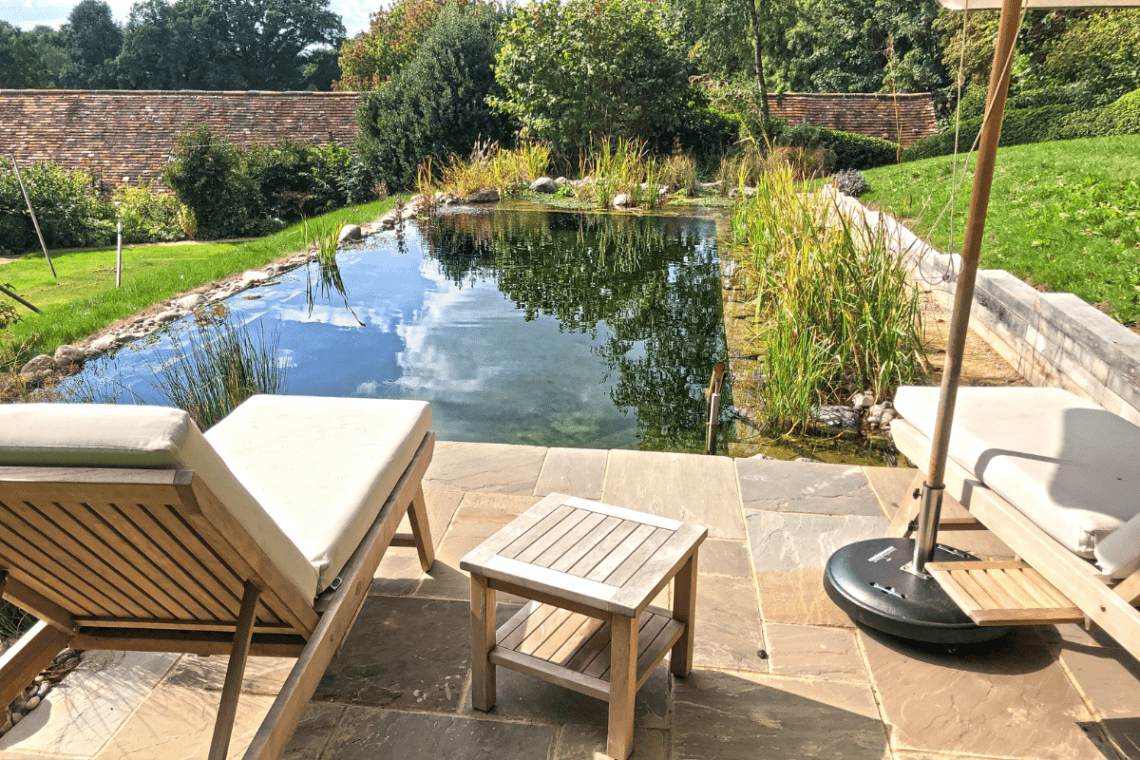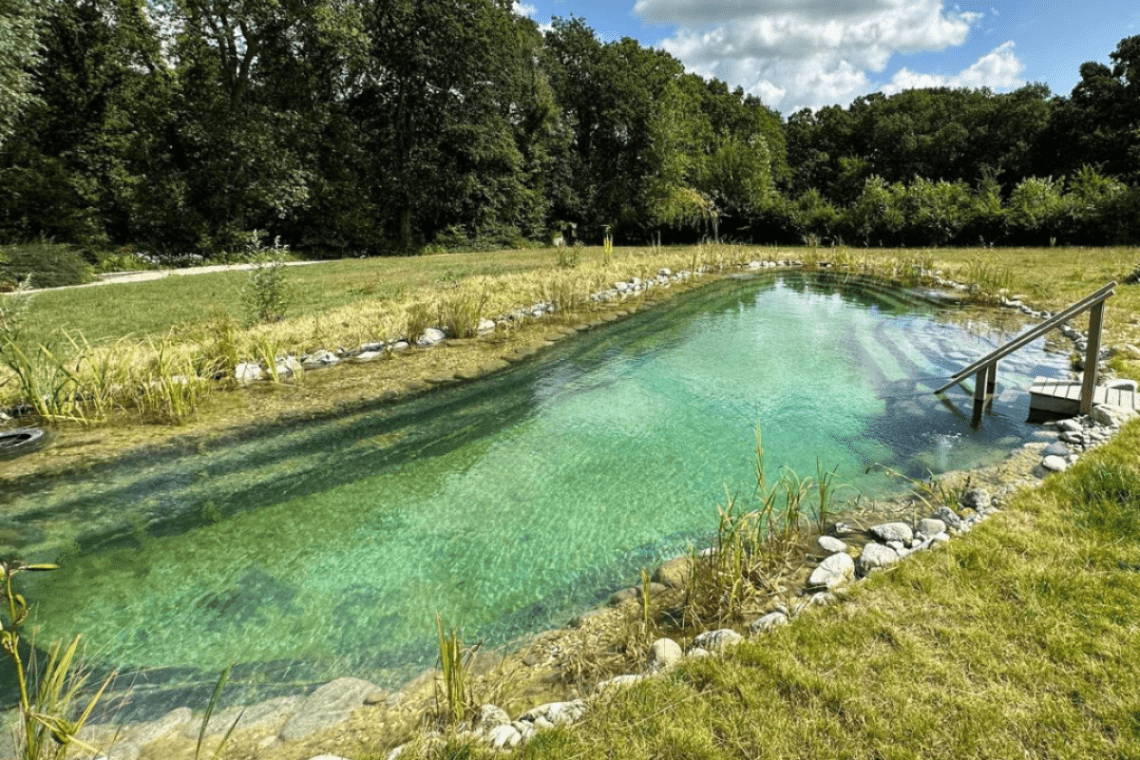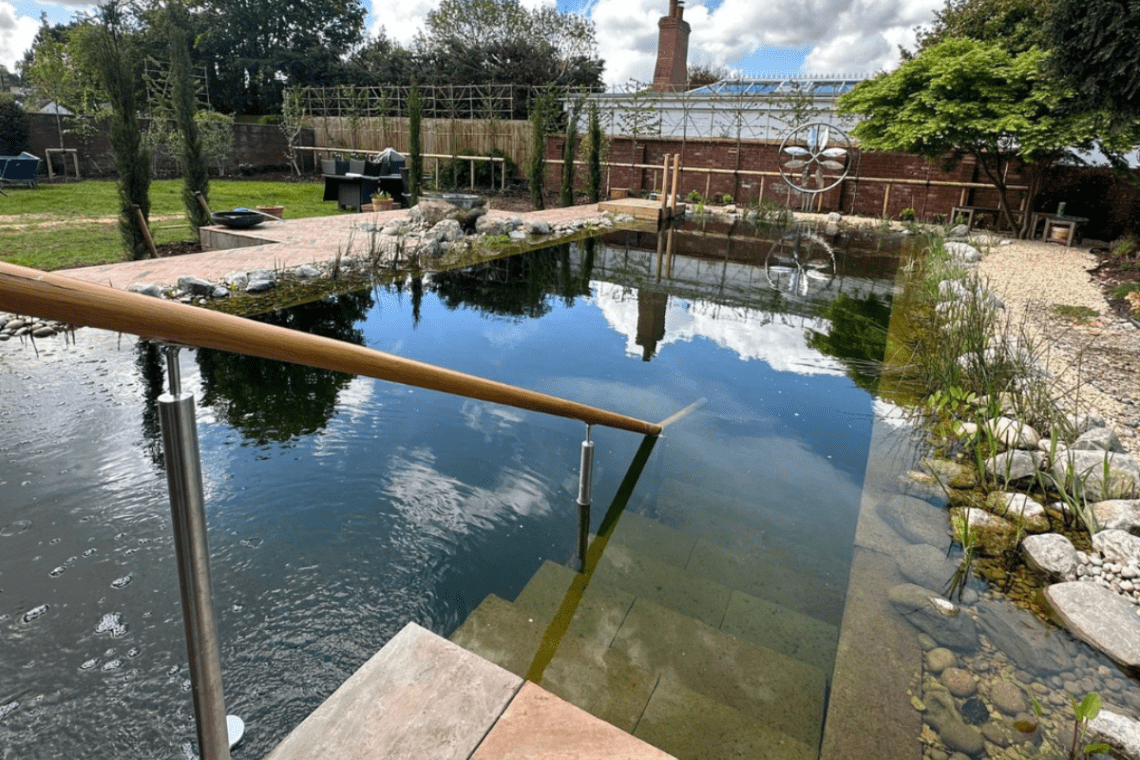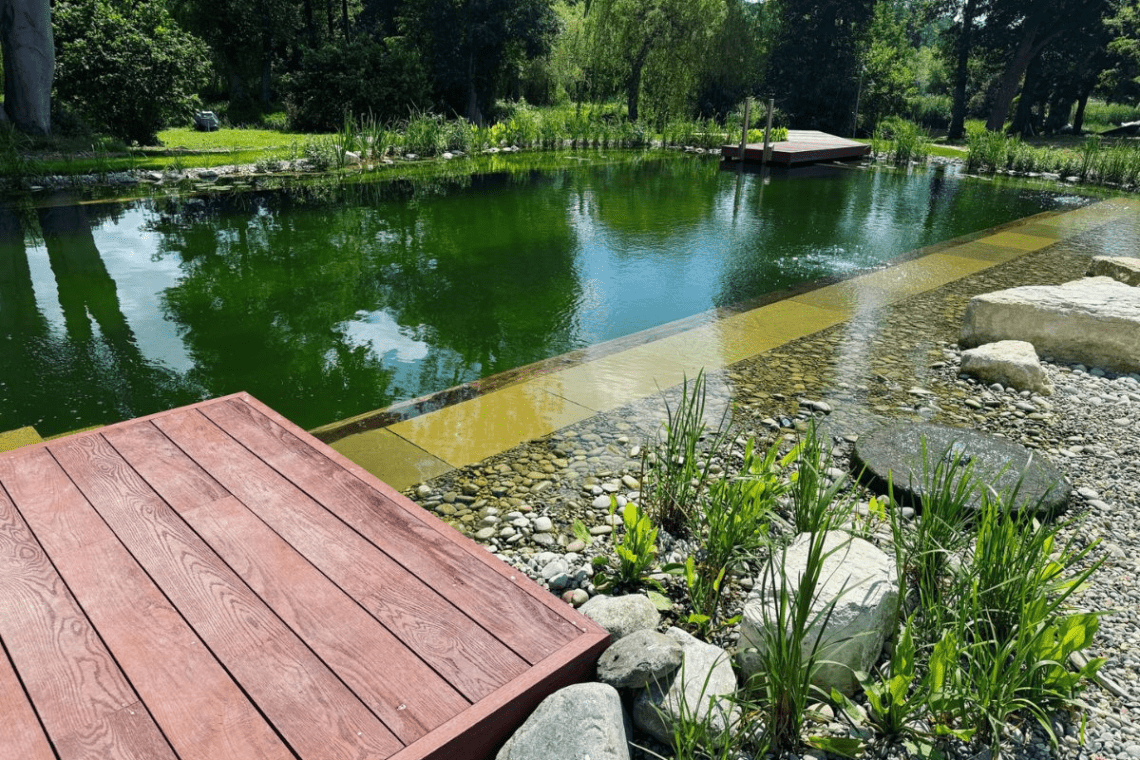A living pool provides the ideal swimming experience with fresh, chemical-free water, closely resembling a conventional swimming pool. While it might look similar to a traditional pool, it swaps out chlorine for a natural purification system. This system includes a biofilter and aquatic plants that work together to keep the water clean and clear.
Imagine enjoying a swim without worrying about chemicals irritating your skin or affecting the environment. The design integrates multiple filtration elements to achieve crystal-clear water. Our system combines mechanical and biological filtration, including skimmers, UV treatment, and beneficial microorganisms, to effectively remove impurities. This ensures a consistently clean and safe swimming environment, with water purified through a precise balance of biological and physical processes, creating a natural oasis in your backyard.
In a world where sustainability is ever more critical, a living pool is eco-friendly and aesthetically pleasing. By embracing nature and utilising innovative filtration systems, this pool type combines beauty and functionality, offering a refreshing alternative to traditional swimming pools.
Understanding Living Pools

Living pools blend natural swimming features with sustainable design. They use biological methods for water purification, doing away with harsh chemicals. This makes them a refreshing and eco-friendly choice for swimming enthusiasts.
Concept and Evolution
Living pools distinguish themselves by integrating natural systems into pool design. They originated as an alternative to traditional chlorine-based pools, offering a more eco-friendly solution. In a living pool, natural processes clean the water, letting you enjoy a chemical-free swimming experience. This concept has gained popularity for its ability to provide crystal clear water using aquatic plants and biological filters.
Initially popular in Europe, living pools have spread globally, appealing to those who want a swimming zone that mimics natural environments. Their design is rooted in harmonising with surroundings while maintaining practical swimming enjoyment.
Key Components
A living pool comprises several essential elements. The regeneration zone is vital, as it houses aquatic plants that naturally purify the water. This zone helps in maintaining the balance by filtering out impurities and replenishing nutrients. The pool water flows between the swimming area and the regeneration zone, ensuring everything stays clean and clear.
The basic components include a biological filter and a pump that circulates water. These ensure the pool remains clear, safe and inviting for swimming.
Unlike conventional pools, living pools eliminate the need for chlorine and other chemicals, offering a more environmentally friendly option. This setup allows for a lower-maintenance pool that blends beautifully with surrounding nature.
The Ecosystem of a Living Pool

Living pools create a balanced, self-sustaining environment using natural processes. These pools rely on a harmony of plants, beneficial bacteria and water movement to maintain pure, chemical-free water perfect for swimming.
Regeneration Zone
The regeneration zone is a core feature of a living pool. This area, separate from the swimming area, hosts a variety of aquatic plants that help maintain water quality. By absorbing nutrients, these plants minimise algae growth and keep the water clear.
The zone acts as a natural filter. It requires space in your garden yet provides a close-to-nature feel, enhancing the pool’s beauty. The regeneration zone relies on the constant flow of water, ensuring fresh water is constantly renewed and purified.
Aquatic Plants and Wildlife
Water plants play a crucial role in maintaining a chemical-free swimming environment. These plants, such as reeds and water lilies, not only purify the water but also provide a habitat for small wildlife. This encourages biodiversity in and around the pool.
The variety of plants helps to absorb nutrients that would otherwise promote algae growth. This allows you to enjoy crystal-clear water without the need for traditional pool chemicals. The presence of these plants mimics natural processes found in ponds, offering a serene setting for a refreshing swim.
Beneficial Bacteria and Water Purification
In living pools, beneficial bacteria are essential for keeping water clean. These microorganisms break down organic compounds, reducing the need for chlorine and other chemicals. The bacteria work alongside biofilters to create a reliable water purification system.
As water flows through the biological filter, bacteria digest organic waste, leaving the water clear and safe for swimming. This natural cleaning process reduces maintenance time while providing an eco-friendly alternative to conventional swimming pools. Beneficial bacteria ensure the pool remains a healthy, inviting space throughout the swimming season.
Design and Maintenance

The design and upkeep of a living pool focus on creating a harmonious environment and ensuring clear, safe water. By integrating natural elements and regular care, you can maintain both beauty and function.
Incorporating a Living Pool into Landscapes
Creating a living pool involves designing spaces that combine beauty and sustainability. The swimming area and regeneration zone must be carefully planned. The regeneration zone often supports aquatic plants that help purify the water naturally. This zone is usually larger than a conventional pool because it includes enough space for plants and a biological filter.
The seamless flow of water between zones ensures the entire pool remains clean and free from chemicals like chlorine. Landscapes benefit from these pools as they blend with gardens, enhanced by additional features like waterfalls or rock formations.
Thoughtful placement boosts both visual appeal and ecological benefits. Solar or thermal covers can further improve efficiency by retaining heat.
Regular Care and Maintenance
Caring for a living pool requires understanding its unique needs. Routine tasks include cleaning debris and ensuring the biological filters and pumps function properly. You will need to change the UV lightbulbs annually, and it’s recommended for this to be completed in April every year just in time for the summer usage.
Monitoring water quality is crucial. Keeping it free from unwanted algae and maintaining crystal-clear water involves balancing nutrients, often supported by phosphate filters like Phospat.
Remember to test and adjust this balance regularly. Seasonal changes might require different steps; for instance, winter maintenance involves adjusting covers and filters as needed to protect both the water and the ecosystem within the pool.
Environmental and Health Advantages

Living pools offer significant benefits to the environment and your health. These pools use natural systems to clean the water, avoiding the harsh chemicals found in traditional pools. This makes them kinder to your skin while reducing the environmental impact.
Sustainable Practices
Living pools work with nature. They clean the water using biological systems, including plants and microorganisms. These ecosystems naturally purify the water by absorbing nutrients and breaking down organic compounds.
This chemical-free system means less harm to wildlife and your garden. Without the chlorine or other chemicals often found in traditional pools, you help reduce environmental waste and the energy used in pool maintenance.
Benefits Over Chlorinated and Saltwater Pools
A natural pool provides a safer swimming environment. Traditional chlorinated pools can irritate the skin and eyes, while saltwater pools still involve chemical processes. In contrast, living pools offer pure water that’s naturally filtered.
You enjoy crystal clear water that feels soft on the skin. Without the presence of chlorine, there are fewer risks of allergic reactions. The benefits extend beyond personal health to the broader ecosystem, fostering a natural habitat for aquatic life.
Wrapping Up

A living pool offers you the chance to have an enjoyable swim in your garden without the risk of allergic reaction or eye irritation. What’s more, they are fantastic for your local environment, including newts, frogs and salamanders.
If you’re interested in setting up a living pool, a swimming pond or a wildlife pond in your garden, we at Ponds by Michael Wheat can build the perfect pool for your garden. Feel free to contact us at 0116 218 5107 or yourjourneybegins@pondandgardendesign.co.uk.